




Certified experts in leading platforms
Scaling an e-commerce business requires more than just presence on the right platforms it demands certified expertise to navigate them with precision. We bring that expertise to streamline growth, eliminate guesswork, and deliver results you can measure with confidence.



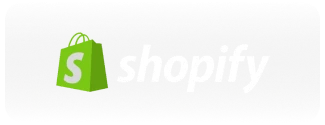
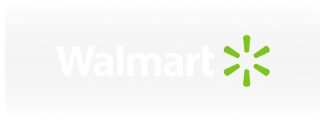
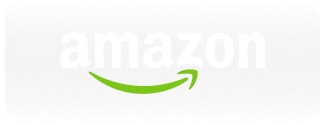
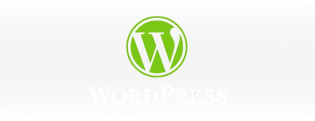













GROW 3X
FASTER,
BETTER,
SMARTER
Scale with precision without paying inflated agency costs.
Why settle for trial-and-error when you can grow with certainty? Our certified experts deliver world-class strategies at a fraction of US prices, giving you faster growth, smarter execution, and proven customer acquisition systems that actually work. With us, scaling isn’t a gamble it’s a guarantee.
Growth without guesswork. Results without compromise.

OUR SERVICES
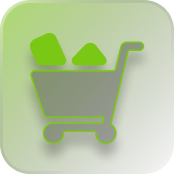
E-Commerce Automation
Don’t just run a store, build a long-term asset. Our automation transforms e-commerce into predictable ...
E-Commerce Automation
Don’t just run a store, build a long-term asset. Our automation transforms e-commerce into predictable wealth creation, securing both growth and future freedom.

UI/UX Designing
The world’s top brands invest in UI/UX because experience is everything. We design premium interfaces that make ...
UI/UX Designing
The world’s top brands invest in UI/UX because experience is everything. We design premium interfaces that make your brand unforgettable and unstoppable.

Web Development
Websites should do more than look good. They should generate growth. Our development ensures performance ...
Web Development
Websites should do more than look good. They should generate growth. Our development ensures performance, speed, and conversions that directly impact your bottom line.
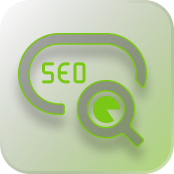
Search Engine Optimization
Visibility is luxury online. Our SEO strategies position your brand at the top. Where authority, trust, and high-value customers ...
Search Engine Optimization
Visibility is luxury online. Our SEO strategies position your brand at the top. Where authority, trust, and high-value customers naturally find you first.

Meta Ads
Meta isn’t just ads. It’s an ecosystem. We design campaigns built for today’s performance and tomorrow’s growth ...
Meta Ads
Meta isn’t just ads. It’s an ecosystem. We design campaigns built for today’s performance and tomorrow’s growth, keeping your brand ahead of the curve

Google Ads
Google is where intent lives. Our ad strategies place your brand at the exact moment customers search Delivering unmatched ...
Google Ads
Google is where intent lives. Our ad strategies place your brand at the exact moment customers search Delivering unmatched visibility and premium conversions.

Resource Outsourcing
Elite businesses scale smarter by leveraging the right talent. Our outsourcing solutions connect you with certified ...
Resource Outsourcing
Elite businesses scale smarter by leveraging the right talent. Our outsourcing solutions connect you with certified experts who deliver premium results at a fraction of the cost.

White Labelling
Ambitious agencies scale faster with the right partners. Our white label solutions let you expand services instantly ...
White Labelling
Ambitious agencies scale faster with the right partners. Our white label solutions let you expand services instantly without extra overhead or operational complexity.


Where Doers Become Leaders
If you’re thinking bigger, you need strategies that match your vision. We empower action-takers to scale faster, smarter, and without limits. The path is clear—now it’s your move.

- Excellent 4.6 out of 5 (836 Reviews)
Why do over
1,000+ businesses
trust Design in PK?

Carlo CA
Design In Pakistan and their ability to solve complex problems
Design In Pakistan and their ability to solve complex problems around ……


Nick Amland
Design In Pakistan’s performance has greatly impressed me.
Design In Pakistan’s performance has greatly impressed me. Their pricing,…..


Sarah Jo
Hands down! 5 STARS!
Coming into the business world as an owner is completely new for me. I am so happy with this team and how patient and…..


Suzette He
I had an excellent experience with Design In Pakistan after I met one of their senior staff by the first name of Sam. Sam and his team went above … …


Arman Dhanani
If you’re looking for someone who delivers on their promises, Design In Pk and Sahil is to go with. I joined their DFY Amazon Automation… …


Roweh Emerson
I had a great experience with Design In Pk! They delivered my project ahead of schedule, ant the results exceeded my expectations. Their team was … …


Macielle Rivera
Alishan and his team were great to work with. They answered all my question and revamped my website within days! I was extremely impressed s…. …


Kenneth Murray
Design In Pk helped us reach our…
Design In Pk helped us reach our audience like never before. Worth every penny!…. …
Design In Pk helped us reach our audience like never before. Worth every penny!…. …


Jordan
Loved the experience with Design In PK
Loved the experience with Design In PK. They made digital marketing and effective!… …
Loved the experience with Design In PK. They made digital marketing and effective!… …


Jordan
Loved the experience with Design In PK
Loved the experience with Design In PK. They made digital marketing and effective!
Loved the experience with Design In PK. They made digital marketing and effective!


Daniel B
Design In PK took our business to new…
Design In PK took our business to new heights. Fast results, great service!
Design In PK took our business to new heights. Fast results, great service!


Taylor
Incredible team
Incredible team! Design In PK really knows how to drive results in digital marketing.
Incredible team! Design In PK really knows how to drive results in digital marketing.


Karl
I recently worked with Hussain and the…
I recently worked with Hussain and the team at Design In PK to get my business
I recently worked with Hussain and the team at Design In PK to get my business


Cherie Reiche
Design In Pakistan exceeded my expectations by far. My original design was improved and developed with the support of the team amazing creativity and … …


Theodore
I had the pleasure of working with Hussain and his team on the development of my website, and the experience has been nothing short of outstanding… …


Johann Merwe
Design in Pakistan efforts have increased our website traffic, membership leads, sales, and social media engagement. Their timely delivery of task … …


Nick Amland
Design In Pakistan’s performance has greatly impressed me. Their competitive pricing, superior product quality, and outstanding communication … …


Ashton
Working with Hussain and his team for Social Media Management has been a game-changer for my business! Before I was struggling to … …


Donn Patrick
Our conversion rate has been increased dramatically because to the team’s skill in creating landing pages that are optimized for conversions … …


Arman Dhanani
If you’re looking for someone who delivers on their promises, Design In Pk and Sahil is to go with. I joined their DFY Amazon Automation … …


Donn Patrick
Our conversion rate has been increased dramatically because to the team’s skill in creating landing pages that are optimized for conversions … …


Arman Dhanani
If you’re looking for someone who delivers on their promises, Design In Pk and Sahil is to go with. I joined their DFY Amazon Automation … …

Let’s Build Your Next Big Win Together
Stop browsing. Start building. Our team is ready to turn your vision into results. Don’t wait another day.


Quick 15-minute intro call, no strings attached

Guaranteed profitability roadmap or money back

24/7 dedicated customer support whenever you need us
Got Questions?
We've Got Answers!
Is Amazon automation safe in 2025?
Amazon automation is safe in 2025 when it is executed 100% within Amazon policies. Most horror stories come from black-hat methods like retail dropshipping, fake invoices, or listing products without proper authorization. These shortcuts can trigger account warnings and suspensions. A compliance-first approach eliminates that risk: obtain authorized reseller rights from brands or approved distributors, keep clean documentation for every SKU, and follow Amazon’s listing, shipping, and customer-service standards. At Design in PK, we focus on organic sales by reselling established brands that already have demand, which means we do not rely on risky PPC campaigns to make products move. Because the products are known and trusted, Buy Box eligibility and sell-through are far more predictable. Clients retain full ownership of their account and inventory, receive transparent reporting, and operate with auditable invoices. The outcome is a safer, steadier way to build an e-commerce asset without gambling on untested tactics or policy gray areas.
How do Amazon automation agencies generate sales without ads?
Sales without ads are possible because Amazon already has massive built-in demand. Instead of spending on PPC to convince shoppers to try unknown products, a smarter strategy is to secure authorized reseller rights for household-name items that customers search for every day. Once the approvals and invoices are in place, listings are optimized to meet Amazon’s standards and to compete for the Buy Box using data-driven pricing, stock depth, and fulfillment quality. This taps into existing organic traffic rather than trying to create demand from scratch. The process typically starts with a curated set of proven SKUs, tests velocity and margin, and then scales weekly by replenishing best sellers and expanding into adjacent lines with the same brand or distributor. Because acquisition costs are minimal, cash flow is more resilient, and profitability does not depend on ever-rising ad budgets. In short: policy-compliant sourcing plus demand-backed products equals sustainable organic sales.
How much does it cost to start an Amazon automation business?
Your total entry cost has two parts: a one-time onboarding/management package and your initial inventory budget. For a full-service, compliance-first model, onboarding commonly ranges from about $5,000 to $8,000 depending on scope (brand approvals, supplier onboarding, listing setup, account operations). Inventory typically starts around $5,000 to $10,000 so you can test multiple SKUs, hold enough stock to win the Buy Box, and replenish winners quickly. Investors with larger budgets ($20,000 to $100,000+) can scale faster by expanding the SKU list and cycling inventory more aggressively. Unlike low-capital retail dropshipping, this model uses real, authorized inventory and proper invoices, which dramatically reduces suspension risk and improves sell-through predictability. Because you are selling recognized brands with existing demand, units tend to turn over faster, helping cash flow. Many stores see operating costs begin to be covered within the first 3–6 months, with timeline variability based on category, budget, and stock limits.
Can I lose money with Amazon automation?
Yes, losses happen when automation is done poorly: unauthorized suppliers, fake documentation, or reliance on risky tactics can lead to account flags, stranded inventory, or thin margins. The way to reduce downside is to treat Amazon as a real business: use authorized brand partnerships or approved distributors, maintain invoice trails, follow policy to the letter, and focus on products with steady, proven demand. A compliance-first operator will set conservative expectations, run test buys across multiple SKUs to validate velocity and margins, and scale only what performs. Transparent reporting and client ownership of the account and inventory further protect your position. Some providers also align incentives through performance-linked terms and documented deliverables. While no business is risk-free, an authorized reseller model that emphasizes documentation, category fit, and disciplined replenishment is far less volatile than ad-heavy private label or gray-hat dropshipping. It converts uncertainty into a process that can be measured and managed.
How fast can I expect results from Amazon automation?
Timelines vary by category and budget, but authorized reseller models can show traction quickly because they sell products that already have demand. A typical arc looks like this: Week 1–2, launch initial SKUs with approvals and invoices in place, ensure listing quality, and calibrate pricing. Weeks 2–4, monitor velocity, keep the Buy Box competitive, and replenish fast-moving items. Months 2–3, prune underperformers, double down on winners, and expand within the same brand or distributor catalog. Months 3–6, scale inventory depth and broaden categories based on performance data. Many stores see first organic sales within the first 7 days of live listings, though full stability depends on inventory depth, stock limits, and the breadth of SKUs. Because the model does not rely on PPC to generate demand, cash flow is not hostage to ad spend, and results compound as you increase stock in proven items and maintain strong account health metrics.
Why is reselling big brands better than private label on Amazon?
Private label requires you to create demand for an unknown product: design, packaging, reviews, and typically heavy PPC to gain visibility. That can work, but it is capital intensive and failure-prone. Reselling established brands flips the script: customers already search for these items, trust them, and repurchase them. When you obtain authorized reseller rights and list correctly, you compete to capture existing demand rather than trying to manufacture it. Benefits include faster initial sales, less dependence on ads, simpler listing optimization, and more predictable replenishment cycles. It is also easier to standardize operations because you are handling known SKUs with stable compliance requirements. The key is sourcing from authorized channels and maintaining tight documentation so your account remains in good standing. If your goal is steady, lower-volatility growth and reliable cash flow, authorized brand reselling is typically the safer, more repeatable path than building a net-new brand from scratch.
Is Amazon automation worth it in 2025?
It is worth it when you prioritize compliance, documentation, and products with proven demand. The model delivers the most value to busy professionals and investors who want an operational team to run the day-to-day while they make capital and strategy decisions. Authorized reseller automation pulls value from Amazon’s existing traffic by focusing on recognizable products shoppers already intend to buy. That reduces the guesswork of trend-chasing or ad-funded launches and shortens the path to cash flow. It also allows scaling through systematic replenishment and SKU expansion inside approved brand catalogs. The caveat: choose a partner who grants you full account and inventory ownership, provides verifiable invoices, and reports performance transparently. With those safeguards, you trade speculative risk for process-driven execution. In 2025’s competitive marketplace, that combination makes automation a compelling way to build an e-commerce asset without taking on a full in-house team or betting the farm on advertising.
What is the difference between Amazon dropshipping and Amazon automation?
Retail dropshipping typically sources from other retailers and can violate Amazon’s seller policies; it often lacks brand authorization and proper invoices, increasing suspension risk. Amazon automation, when done properly, is a managed, policy-compliant operation: a specialist team secures authorized supply, sets up listings, manages inventory and fulfillment, and maintains account health on your behalf. The automation model emphasizes documentation, brand approvals, and measurable KPIs, not shortcuts. Another key difference is demand creation versus demand capture. Dropshipping frequently relies on opportunistic listings and thin margins; authorized automation sells known-brand products with steady search volume, aiming for the Buy Box on SKUs with proven sell-through. The result is a more durable business: clean compliance posture, predictable replenishment cycles, and scalability based on data rather than guesswork. If you want a hands-off, long-term asset, compliant automation is the safer, more professional alternative to retail dropshipping.
How do I avoid scams in Amazon automation?
Protect yourself with three simple rules. First, you must own the Amazon account and inventory. If an agency insists on controlling the account, walk away. Second, require verifiable documentation: legitimate invoices from authorized distributors or the brands themselves for every approval and restock. Do not accept unverifiable paperwork or vague promises. Third, demand clear terms: scope, KPIs, reporting cadence, and safeguards such as refund provisions or performance-linked components. Ask for references and real, inspectable examples of active listings the provider manages. During onboarding, verify that gating, insurance, tax exemption (if applicable), and category requirements are handled properly. A trustworthy operator will prioritize compliance, transparency, and your long-term account health over flashy projections. Following these rules dramatically lowers the odds of suspension, stranded capital, or vendor abandonment—and positions your business to scale responsibly on Amazon.
Do I need to run ads to succeed with Amazon automation?
No. If you are reselling authorized, established brands, demand already exists and customers will find your listings organically through Amazon search and category browsing. Ads are useful for private label launches or to accelerate visibility for new-to-market items, but they are not required for a demand-capture strategy. A well-run authorized reseller store focuses on listing quality, competitive pricing, sufficient stock depth to hold the Buy Box, and consistent fulfillment metrics. Because you are not spending on PPC to create demand, margins are less volatile and cash flow can stabilize faster. Many sellers see first organic sales shortly after go-live once inventory is active and buyable. Over time, the compounding effect comes from expanding your SKU set within the same authorized catalogs and keeping top sellers in stock, not from increasing ad budgets. This keeps the operation capital efficient and policy aligned.
How long does it take to scale an Amazon automation business?
Most compliant stores follow a three-phase curve. Phase 1 (weeks 1–4): launch, stabilize operations, and validate velocity across a starter set of SKUs. Phase 2 (months 2–3): concentrate capital on winners, improve Buy Box share, and expand within brand or distributor catalogs. Phase 3 (months 4–6): increase inventory depth, broaden categories, and formalize a weekly replenishment rhythm. Budget influences pace—larger working capital accelerates SKU testing and restocking—but disciplined execution matters more than raw spend. Key scaling levers include stock limits, lead times, unit economics, and account health metrics (late shipment, cancellation, and defect rates). Because this model captures existing demand, you generally scale by repeating what works rather than reinventing it. Many operators grow from a modest monthly inventory position to multiples of that within six months by simply executing the cycle: test, measure, replenish, expand.
Is outsourcing e-commerce management better than hiring an in-house team?
For most sellers, yes. Building an in-house Amazon team requires recruiting, training, process development, and ongoing oversight across sourcing, compliance, catalog, pricing, operations, and support. That adds payroll and management complexity before you ever move a unit. Outsourcing to a specialized operator gives you an immediately functional team with established supplier networks, policy expertise, and proven workflows. Cost-wise, a full-service partner is often comparable to one mid-level salary yet covers multiple roles. Risk-wise, incentives can be aligned through clear KPIs and performance-linked terms, and reputable providers structure accounts so ownership remains with you. The result is faster time-to-value and fewer operational missteps. If your goal is to build a durable Amazon channel without building an internal department, outsourcing provides leverage: you keep strategic control and capital allocation decisions, while expert operators handle execution, documentation, and day-to-day performance.

From vision to execution, we deliver results that truly matter.
Corporate Office.
539 W. Commerce St #7865
Dallas TX 75208 USA
Operation Center.
6th Floor M, Emirates Tower, 13, F-7
Markaz, Islamabad Capital Territory
44210 Islamabad,Pakistan
Phone: +1 (208) 998-6888
Email: Support@designinpk.com
Company
- About Us
- Contact Us
- Blogs
- reviews
- Careers
Services
What separates winners from the rest?
Gain access to strategies the top 1% use to scale faster, smarter, and with less risk. Subscribe and stay ahead of the curve.








